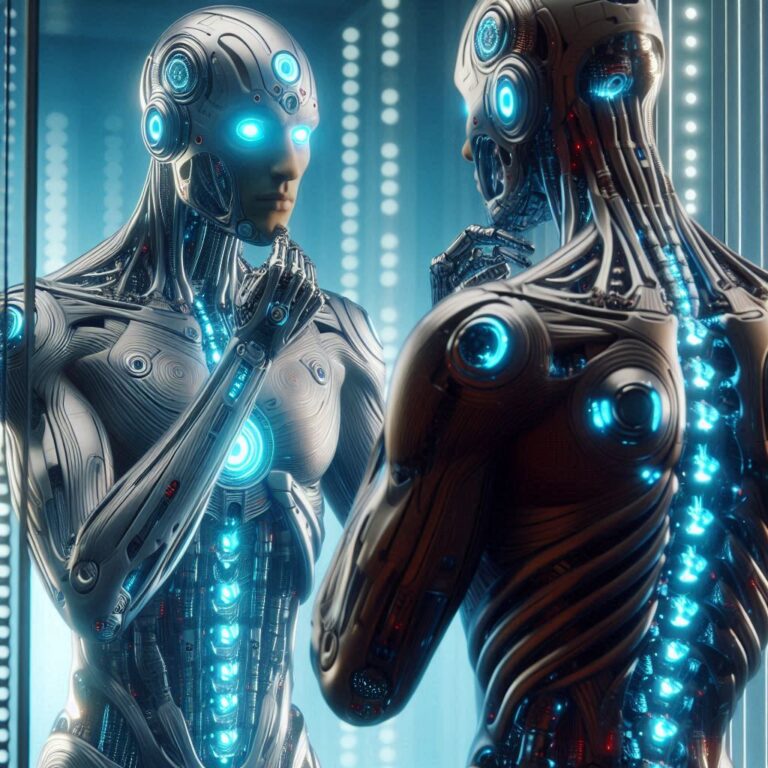Introduction: AI In Space Exploration
Space exploration has long exemplified human ingenuity and an insatiable curiosity. From the first satellite, Sputnik, to the Apollo moon landings, humanity has continually pushed the boundaries of what’s possible. Today, as we venture deeper into the cosmos, we face challenges that are increasingly complex and demanding. Enter Artificial Intelligence (AI), a transformative technology that is revolutionizing how we explore space. AI in space exploration is not just a futuristic concept—it’s a present-day reality, enabling us to tackle tasks that were once deemed impossible.
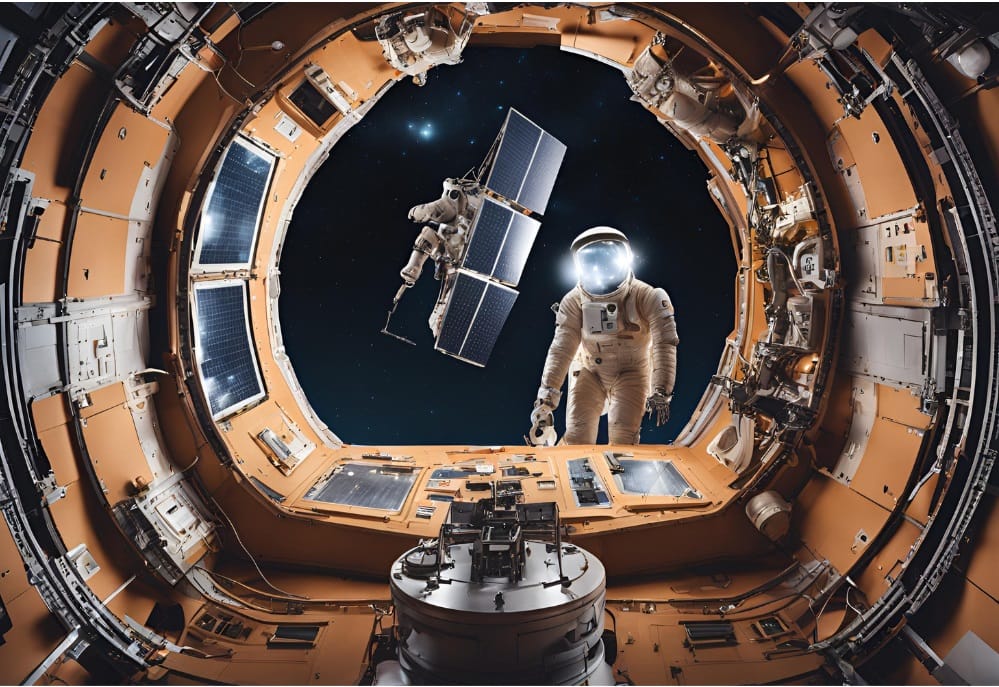
In this blog, we’ll delve into the role of AI in space exploration, its current applications, and its future potential. From autonomous spacecraft to AI-driven data analysis, we’ll explore how AI is reshaping our understanding of the universe and paving the way for groundbreaking discoveries.
The Role of AI in Space Exploration: Why It Matters
Space exploration generates an overwhelming amount of data. Telescopes like Hubble and James Webb capture terabytes of images and measurements daily, while space probes and rovers transmit vast streams of information from distant planets. Processing this data manually is impractical, if not impossible. This is where future of AI in space exploration shines.
Handling Massive Data Sets
AI, especially machine learning algorithms, thrives in processing and interpreting vast amounts of data with remarkable efficiency. For instance, NASA’s Kepler mission used AI to sift through data from thousands of stars, identifying exoplanets with remarkable accuracy. Without AI, this task would have taken years instead of months.
Decision-Making and Automation
In the harsh environment of space, where communication delays can range from minutes to hours, real-time human intervention is often impossible. AI enables spacecraft to make autonomous decisions, such as adjusting their trajectory or avoiding obstacles. For example, NASA’s Mars rovers use AI to navigate the planet’s rugged terrain without constant input from Earth.
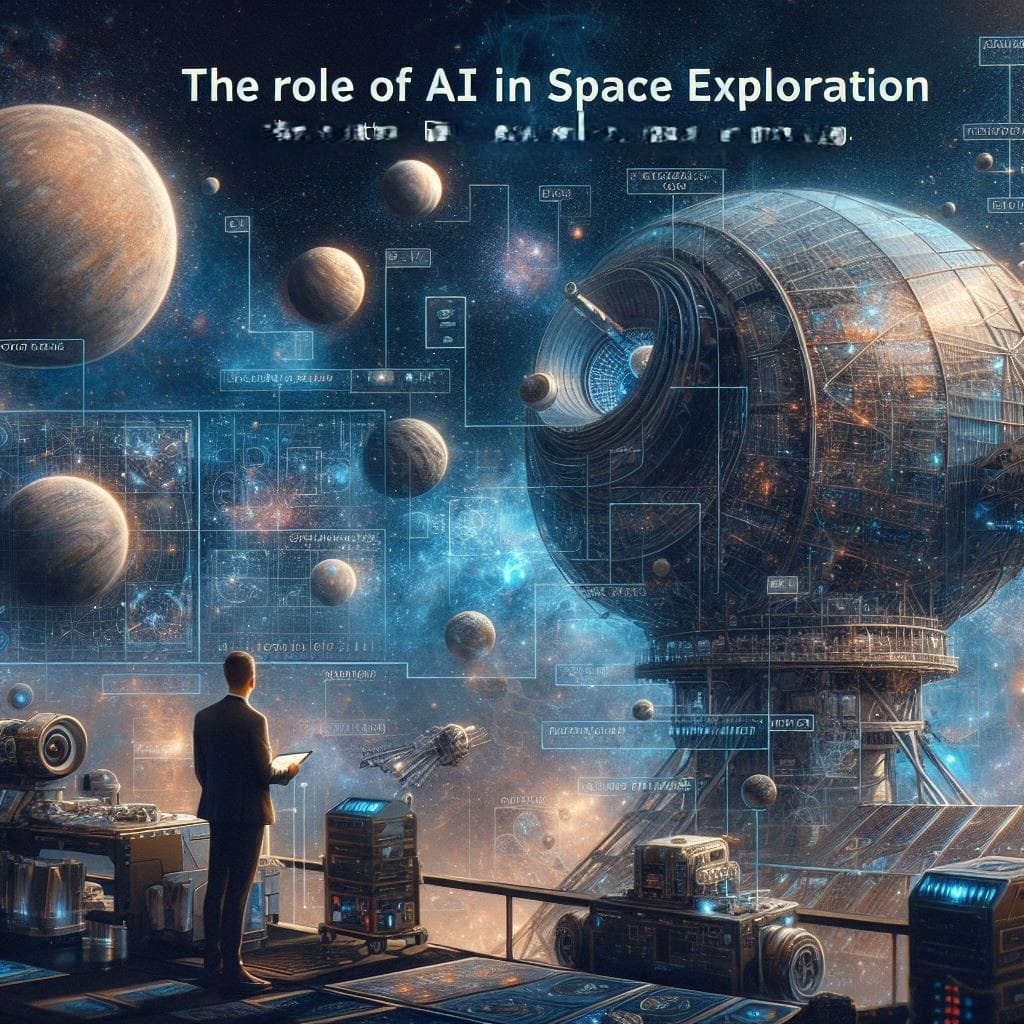
Investment by Space Agencies
Leading space agencies and private companies are heavily investing in AI. NASA’s Artificial Intelligence in Space Exploration initiative focuses on developing AI tools for mission planning and data analysis. Similarly, SpaceX uses AI to optimize rocket landings, while Blue Origin explores AI-driven systems for future lunar missions.
AI-Powered Spacecraft and Robotics: Current Applications
AI is already playing a pivotal role in space missions, from autonomous navigation to robotic exploration. Let’s dive into some of the most groundbreaking and innovative applications.
Autonomous Navigation Systems
Spacecraft traveling to distant planets must navigate complex environments with minimal human input. AI-powered systems, such as NASA’s Autonomous Sciencecraft Experiment, enable spacecraft to analyze their surroundings and make real-time decisions. For example, the Europa Clipper mission will use AI to map Jupiter’s moon Europa and identify potential landing sites.
AI in Mars Rovers
Mars rovers like Curiosity and Perseverance rely on AI to navigate the Red Planet’s challenging terrain. These rovers use AI algorithms to analyze images, avoid obstacles, and select scientifically valuable targets for analysis. Perseverance’s AI-driven system, for instance, can autonomously collect rock samples, a task that would otherwise require constant human oversight.
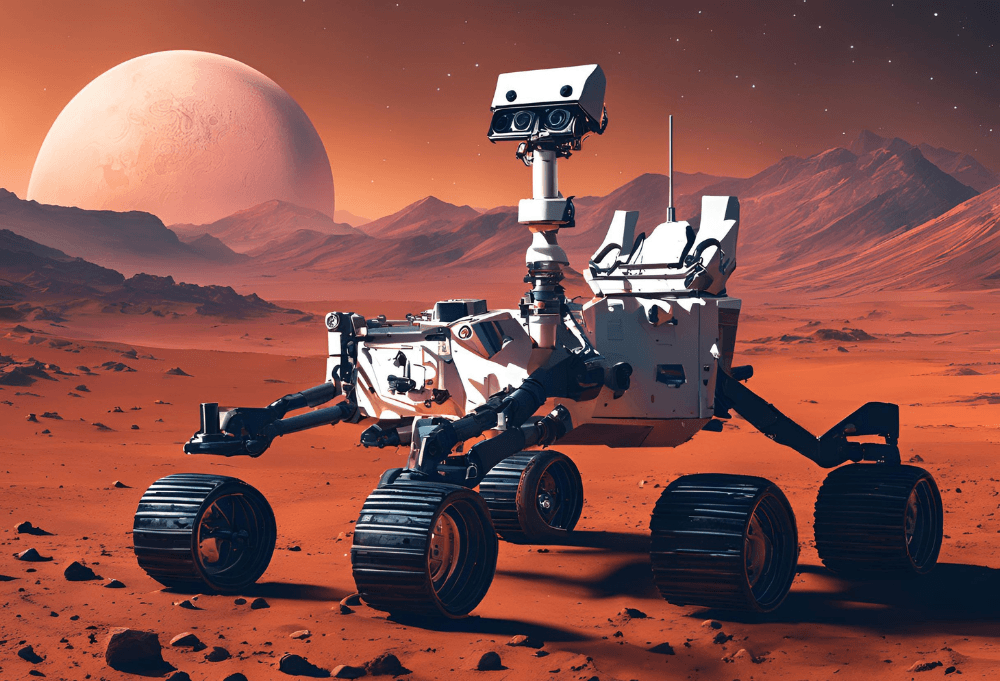
AI-Driven Satellites
Satellites equipped with AI are revolutionizing Earth observation and communication. For example, AI-powered satellites can monitor deforestation, track weather patterns, and even predict natural disasters. Companies like Planet Labs and Spire Global are leveraging AI to enhance satellite operations, providing real-time insights into our planet’s changing environment.
Autonomous Space Stations
Future space stations, such as NASA’s Lunar Gateway, will rely on AI to manage onboard systems. From life support to power management, AI will ensure the station operates efficiently, even in the absence of human crew members.
Machine Learning in Space Science: Data Processing and Discovery
The universe is vast, and so is the data it generates. Machine learning, a subset of AI, is proving indispensable in processing and interpreting this data.
Analyzing Astronomical Data
Telescopes like the James Webb Space Telescope and Hubble capture millions of images and spectra. Machine learning algorithms can analyze these datasets to identify patterns, such as the presence of exoplanets or the distribution of dark matter. For example, AI has been used to discover thousands of exoplanets by analyzing subtle changes in starlight.
Predicting Cosmic Events
AI is also being used to predict cosmic events, such as supernovae and asteroid trajectories. By analyzing historical data, machine learning models can forecast when and where these events will occur, helping scientists prepare for observations.
Mapping the Universe
AI is aiding in the creation of detailed maps of the universe. For instance, the Dark Energy Survey uses machine learning to analyze images of distant galaxies, helping scientists understand the nature of dark energy and the expansion of the universe.
AI in Deep Space Missions: Exploring Beyond Our Solar System
As humanity ventures beyond our solar system, AI is emerging as an indispensable tool for overcoming the vast distances, communication delays, and harsh space environments associated with deep space exploration. AI’s ability to make autonomous decisions, analyze vast amounts of data in real time, and optimize mission operations makes it a crucial component of future interstellar expeditions.
Missions to Mars and Europa
AI is already playing a key role in deep space missions, particularly in our quest to explore Mars and Jupiter’s moon, Europa.
- Mars Exploration: NASA’s Perseverance rover is equipped with AI-powered navigation and hazard avoidance systems that allow it to traverse the Martian terrain with minimal human intervention. AI also enables the rover to analyze rock samples and identify signs of ancient microbial life. Future missions, including the Mars Sample Return mission, will leverage AI for autonomous docking and retrieval operations.
- Europa Clipper Mission: Jupiter’s moon Europa is believed to harbor a subsurface ocean beneath its thick icy crust, making it a prime target for astrobiological research. The upcoming Europa Clipper mission will use AI to analyze high-resolution images, identify potential landing sites, and detect biosignatures—key indicators of life—within its frozen surface.
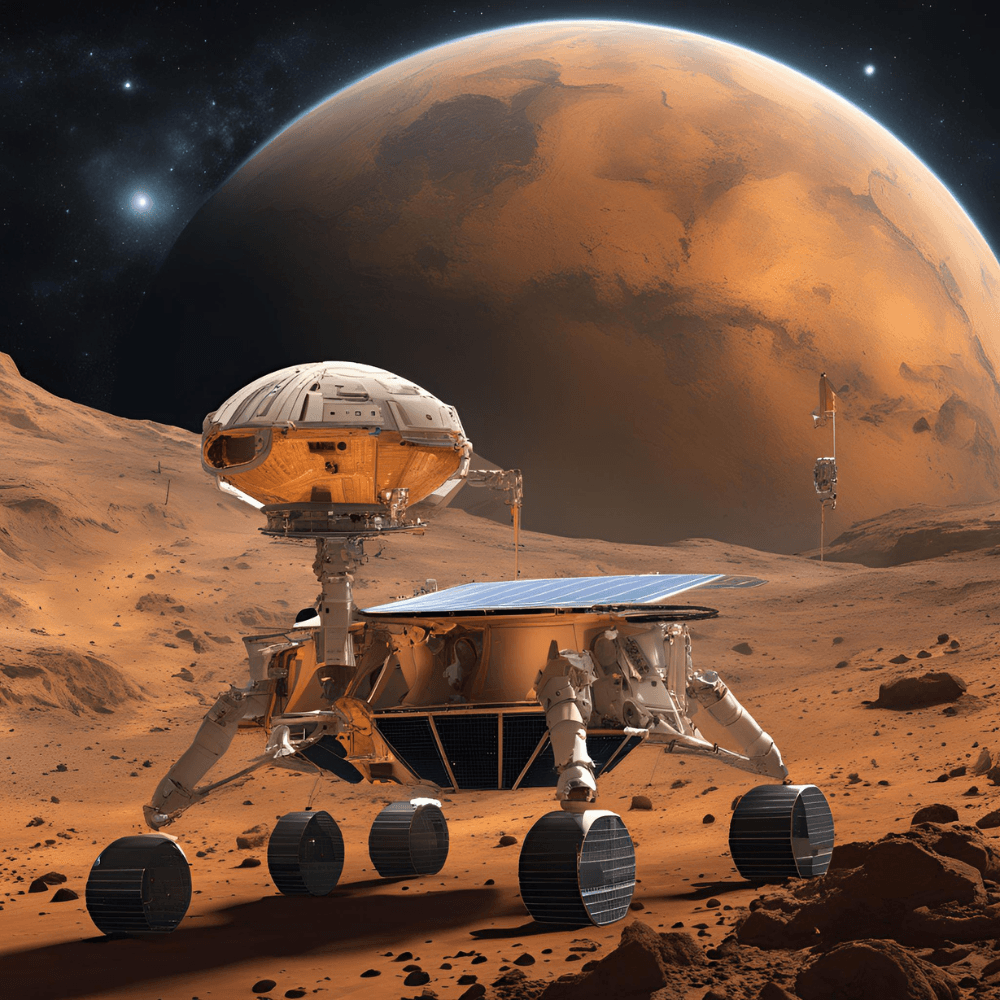
Asteroid Mining and Resource Utilization
Asteroids contain vast amounts of precious metals and water ice, which could serve as essential resources for future space missions. AI is paving the way for asteroid mining, helping scientists and companies develop efficient resource extraction strategies.
- AI-Powered Asteroid Mapping: Organizations like NASA and private firms such as Planetary Resources and Deep Space Industries are using AI algorithms to analyze asteroid composition, orbits, and trajectories. AI enables the identification of asteroids rich in rare metals like platinum and gold.
- Autonomous Mining Operations: AI-driven robotic probes could autonomously extract valuable resources from asteroids, refining materials in microgravity environments before transporting them back to Earth or space colonies.
Interstellar Missions
Reaching other star systems requires breakthroughs in autonomous AI systems due to the immense distances involved. One such ambitious initiative is Breakthrough Starshot, which aims to send AI-powered nanocraft to the Alpha Centauri system, our closest stellar neighbor.
- AI-Driven Navigation: AI will guide these nanocraft across interstellar space, adjusting their trajectory based on real-time data. Given that signals from Earth would take years to reach the probes, AI must make critical decisions independently.
- Data Analysis & Transmission: AI will compress and process vast amounts of data from onboard sensors, transmitting only the most relevant findings back to Earth. This will ensure efficient use of limited bandwidth in deep space communications.
AI in Human Spaceflight: Enhancing Astronaut Safety and Efficiency
AI is not only essential for robotic missions but is also transforming human spaceflight. From assisting astronauts aboard the International Space Station (ISS) to enhancing medical safety during long-duration missions, AI is ensuring that humans can survive and thrive in space.
Assisting Astronauts
Spacecraft and space stations are complex environments where astronauts perform critical scientific research and maintenance tasks. AI-driven assistants are designed to improve efficiency and support crew members.
- NASA’s CIMON: The Crew Interactive Mobile Companion (CIMON) is an AI-powered assistant that interacts with astronauts aboard the ISS. It recognizes voices, provides real-time information, and helps with operational procedures. Future AI companions could act as personal assistants for deep-space travelers.
- Robotic Assistants: AI-powered robots, such as the Astrobee system aboard the ISS, help astronauts with routine tasks like inventory management, freeing up time for scientific research and mission-critical operations.
Space Medicine
Space presents unique challenges for human health, including radiation exposure, muscle atrophy, and psychological stress. AI is revolutionizing space medicine by enabling real-time health monitoring and predictive diagnostics.
- AI-Driven Diagnostics: Wearable biosensors equipped with AI algorithms continuously track astronauts’ vital signs. If an astronaut shows signs of illness, AI can recommend countermeasures or alert mission control for early intervention.
- Remote Surgical Assistance: Future deep-space missions to Mars may require AI-powered robotic surgery. Systems like MIRA (Miniaturized In Vivo Robotic Assistant) are being developed to assist astronauts with medical procedures when no human doctor is available.
Predictive Maintenance
Spacecraft and space stations require continuous maintenance to ensure the safety of astronauts. AI is making maintenance smarter and more proactive.
- AI-Powered Fault Detection: AI algorithms analyze spacecraft telemetry data, detecting anomalies before they escalate into critical failures. This technology is already in use on the ISS, helping to predict malfunctions in life-support systems.
- Autonomous Repairs: Future spacecraft may feature robotic systems that use AI to conduct repairs autonomously. These robots could 3D-print spare parts or self-heal structural damage in microgravity environments.
The Future of AI in Space Exploration: What’s Next?
The future of AI in space exploration holds exciting possibilities, from fully autonomous spacecraft to AI-assisted terraforming of distant planets.
Fully Autonomous AI Explorers
Next-generation space probes will be equipped with AI systems that allow them to explore celestial bodies without human input.
- Self-Sufficient Rovers: Future rovers on Mars, Europa, and Titan may feature advanced AI that enables them to conduct scientific experiments, detect life, and navigate treacherous terrain without waiting for instructions from Earth.
- AI-Driven Space Telescopes: AI could enhance future telescopes like the James Webb Space Telescope by filtering out irrelevant cosmic noise and prioritizing the most promising exoplanets for further study.
Terraforming Planets
Terraforming—modifying a planet’s environment to make it habitable—is a long-term vision for space colonization. AI will play a vital role in managing the complex ecosystems required for planetary engineering.
- AI-Controlled Climate Models: AI can simulate planetary climates and predict the outcomes of introducing elements like greenhouse gases or engineered microbes to alter atmospheric conditions.
- Resource Allocation: AI could optimize the use of raw materials, ensuring that energy and water resources are efficiently distributed in space habitats.
AI-Human Collaboration
As we establish lunar and Martian colonies, AI will act as an integral part of human teams, ensuring mission success.
- AI-Guided Construction: AI-driven robotic systems will 3D-print habitats on the Moon and Mars using in-situ resources, reducing dependency on Earth-based supply chains.
- Autonomous Farming in Space: AI-powered hydroponic and aeroponic systems will optimize plant growth for food production in space colonies.
Conclusion: AI’s Expanding Role in the Cosmos
The role of AI in space exploration is transforming how we navigate the final frontier, solving challenges once deemed impossible. From self-learning robotic explorers to AI-driven mission planning, artificial intelligence in space is enhancing efficiency, safety, and the speed of discovery.
As technology advances, the future of AI in space exploration holds even greater promise. AI-powered systems will not only optimize spacecraft operations and assist astronauts in deep-space missions but may also pave the way for autonomous colonies on distant planets. With AI at the helm, our journey into the cosmos becomes more ambitious, unlocking new frontiers and bringing us closer to a future where space is not just the next destination—but a place we can truly inhabit.
Related Articles You May Find Interesting
If you enjoyed learning about AI in Space Exploration, you might also be interested in these articles:
- Harnessing AI in Predicting Natural Disasters – Explore how AI is being used to predict and mitigate the impact of natural disasters like earthquakes, floods, and hurricanes.
- AI in Oceanography – Dive deeper into how AI is transforming marine research, from deep-sea exploration to climate monitoring and ocean health.
- AI in Everyday Life – Discover how artificial intelligence is shaping our daily routines, from smart assistants to home automation and personalized recommendations.
- Agentic AI Systems – Learn about advanced AI models that can operate autonomously, making intelligent decisions with minimal human input.
- AI in Wildlife Conservation – Find out how AI is being used to protect endangered species, monitor wildlife populations, and combat poaching.
- Impact of Generative AI in Creative Industries – See how generative AI is transforming fields like art, music, writing, and content creation, pushing the boundaries of creativity.
These articles showcase the diverse and transformative applications of AI across various fields, highlighting its potential to solve complex challenges and improve our world.


